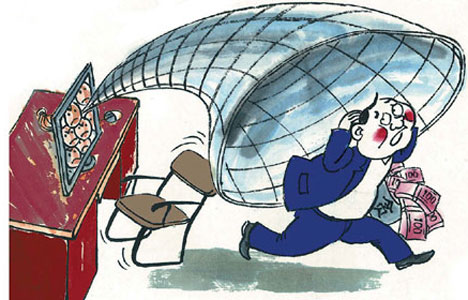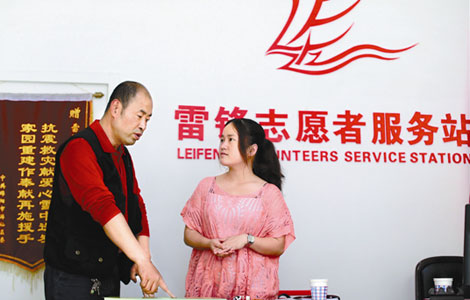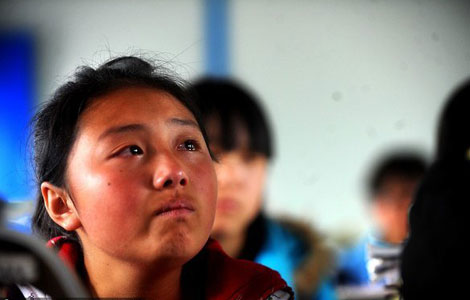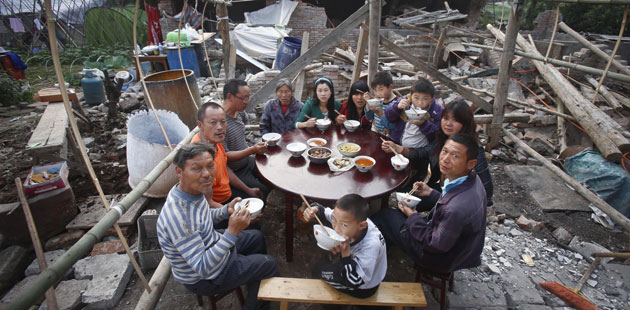The basic rights of workers are guaranteed. The state has amended the Labor Contract Law and the Law on the Prevention and Treatment of Occupational Diseases, and formulated the Special Rules on Protection of Female Employees and Interpretations (III) of the Supreme People's Court of Several Issues Concerning the Application of Law in the Trial of Labor Dispute Cases, so as to protect various rights of workers. More trade unions have been established, involving more employees. By the end of September 2012 the number of grassroots trade unions had increased to 2.666 million, covering 6.166 million enterprises and public institutions, up 34.9 percent and 42.8 percent over 2009, respectively, of which 1.855 million trade unions were set up in non-public economic organizations, an increase of 47 percent over 2009. The number of trade union members nationwide reached 280 million, among whom 160 million were from non-public economic organizations, up 16.7 percent and 16 percent over 2009, respectively. China actively promotes the collective negotiation system on wages to guarantee the employees' right to fair remuneration. By the end of September 2012 a total of 1.228 million special collective contracts had been signed throughout the country, involving 3.082 million enterprises and 150 million employees, up 140 percent, 241 percent and 142 percent over 2009, respectively. In 2012 labor security supervision organs at various levels investigated and handled 412,000 law-breach cases regarding labor security, and urged employers to sign labor contracts with 8.055 million employees. In the same year 24 provinces (autonomous regions and municipalities directly under the central government) raised their local minimum wage standards, averaging a 22 percent annual hike. The per-capita annual wage for employees in the urban non-private sector increased from 24,932 yuan in 2007 to 42,452 yuan in 2011 and that for employees in the urban private sector increased from 18,199 yuan in 2009 to 24,556 yuan in 2011, representing an average annual increase of 14.23 percent and 16.16 percent, respectively.
Protection is offered for people's safety in life and production. In China great importance is attached to the people's safety in life and production safety in the course of economic development. China's urban living environment is constantly improving as the state has been working hard to build a well-established service system of urban public works and utilities in recent years. China has won the UN-Habitat Scroll of Honor Award 21 times. Seven Chinese projects have been awarded the Dubai International Award for Best Practices to Improve the Living Environment, 30 cities have been awarded the China Habitat Environment Prize, and 398 projects have been awarded the China Habitat Exemplary Environment prize. In 2011 some 90.6 percent of water supplies in China's 113 key environmental-protection cities were up to the state-set quality standards. By the end of 2012 China had established more than 30,000 water-quality monitoring sites, extending the monitoring network for drinking water safety to all provinces. From 2010 to 2012 China solved drinking water safety problems for a total of 172 million rural residents and 23 million rural students and teachers. Since 2008 China has completed risk-removing reinforcement for 18,000 large, medium-sized and small key reservoirs. The state has endeavored to solve prominent issues and deep-rooted problems that hamper production safety, and improved the legislation and policies concerning safe production. It has issued production safety standards, stringently cracked down on illegal production, operation and construction, and corrected activities that breached relevant regulations. China has continuously carried out the "Production Safety Year" movement to ferret out and remove hidden dangers. In 2012 China investigated and dealt with 1.44 million cases of illegal production and construction that operate without licenses or lacking some of the licenses, plus 3.05 million cases of regulation violations. Every year China trained on average over five million safety managers, special operation personnel and persons in charge of high-risk industries, as well as 13 million migrant workers and 130,000 team leaders in coal mines. In addition, China has unveiled 1,022 key technologies for the prevention of major accidents and 355 new-type safe and practical products, and promoted 100 safety dynamic monitoring projects. Industrial accidents and their toll of life continued to go down. In 2011 the number of industrial accidents and their toll of life were down by 4.3 percent and 5.1 percent as compared with 2010, and further down by 3.1 percent and 4.7 percent in 2012 from that of 2011. The death rate per 100 million yuan GDP, death rate per 100,000 employees in coal mining, industrial and commercial sectors, death rate per one million tons of coal produced, and death rate of road traffic accidents per 10,000 vehicles in 2011 were down by 13.9 percent, 11.7 percent, 24.7 percent and 12.5 percent, respectively, as compared with 2010, and the figures in 2012 went further down by 18 percent, 13 percent, 34 percent, and 11 percent, respectively, from that in 2011.
Related readings:
Human rights protection highlighted in laws amendment
US 'turns blind eye to human rights'
Human rights progress as a matter of fact
Human rights record of the United States in 2012











